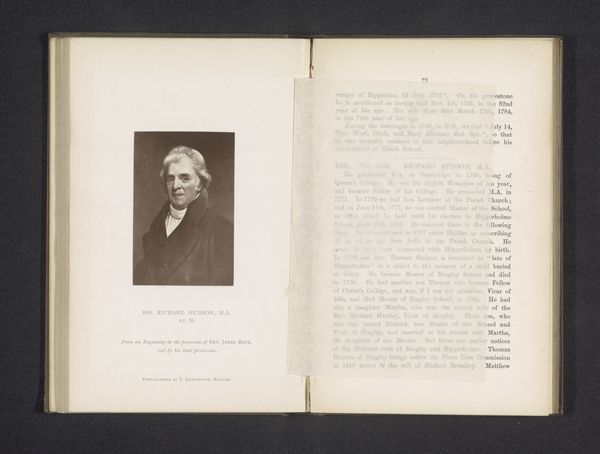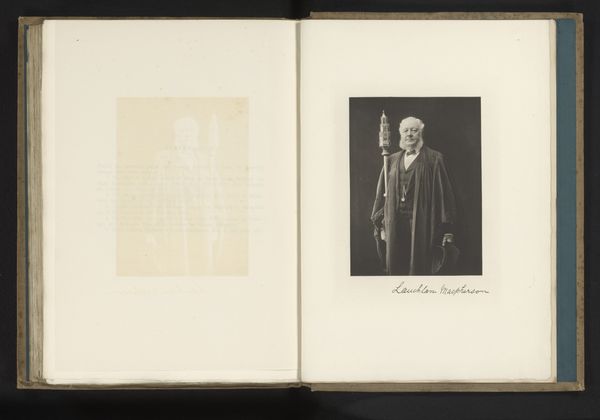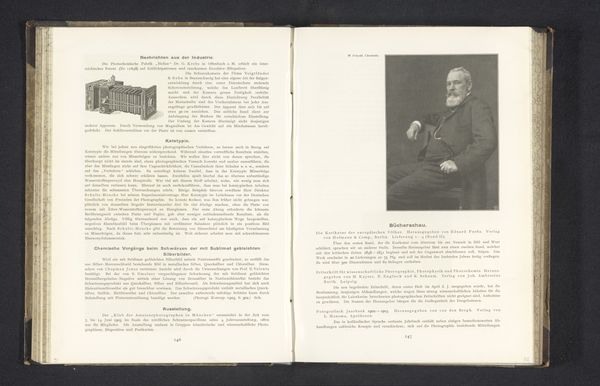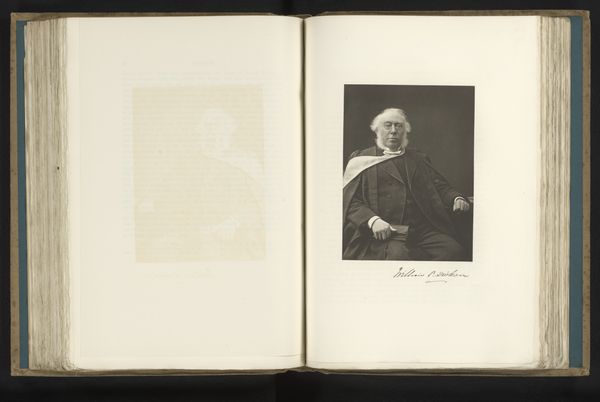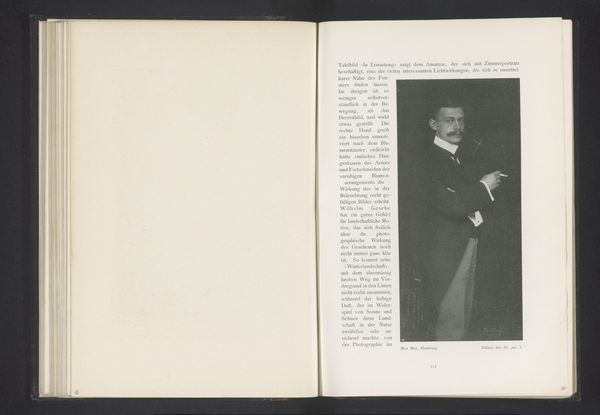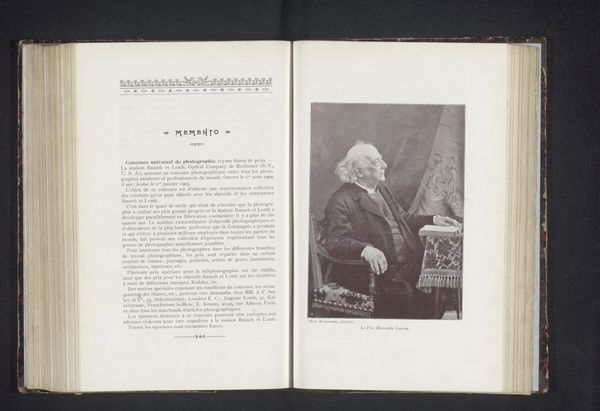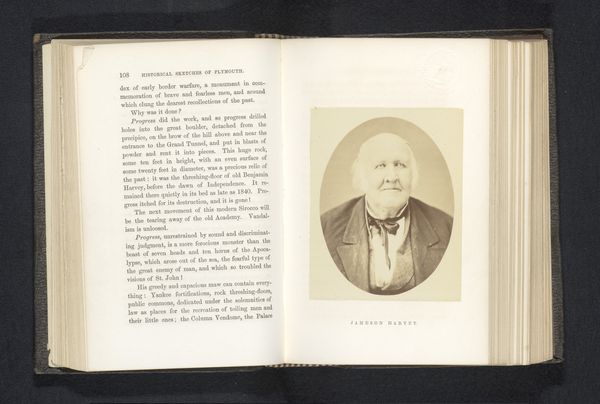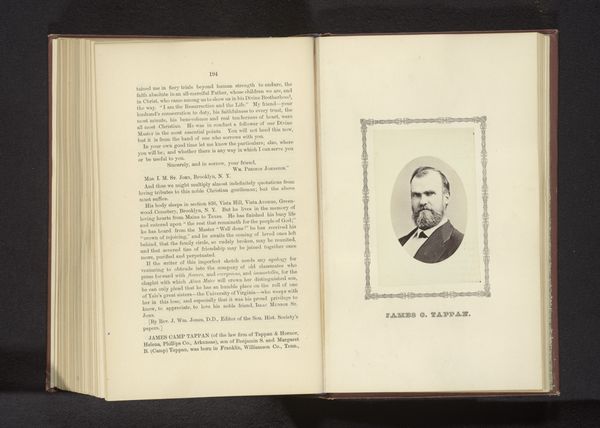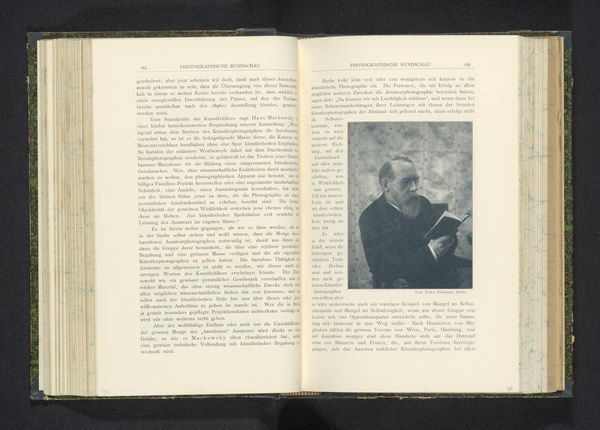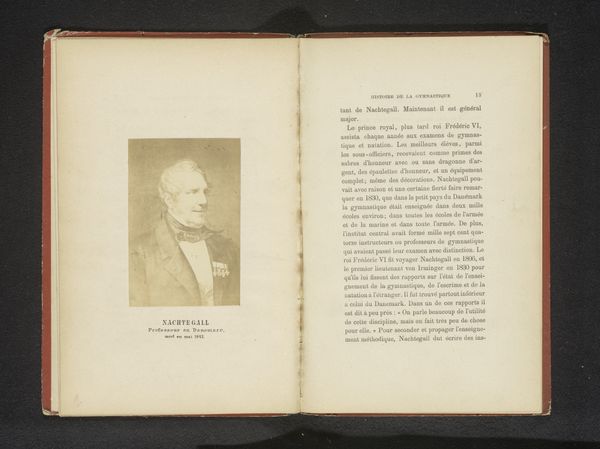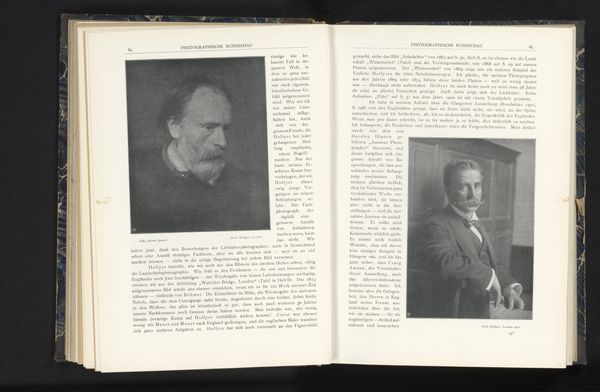
photography, ink, gelatin-silver-print
#
portrait
#
photography
#
ink
#
gelatin-silver-print
Dimensions: height 161 mm, width 126 mm
Copyright: Rijks Museum: Open Domain
Curator: Looking at this compelling image, we are observing "Portrait of Thomas Carlyle," a gelatin-silver print with ink by Julia Margaret Cameron, dating between 1850 and 1881. Editor: The first thing that strikes me is how this profile view evokes a sense of introspective depth. The stark contrast between light and shadow gives the portrait such a pensive mood. Curator: Absolutely. Cameron often explored philosophical and intellectual circles. Her portraits weren’t merely likenesses; they aimed to capture the sitter's character within the Victorian societal context. Consider Carlyle's own influence as a historian and social commentator during this period. The very act of photographing him aligns with questioning traditional authority. Editor: I agree, there’s a sense of quiet defiance within this very distinguished representation. Looking at the composition, one is struck by the abundance of visual signifiers of a certain brand of learned, and thoughtful masculinity. The beard alone carries the weight of time, and suggests age, wisdom and historical perspective. The wisps of unruly white hair add this wonderful detail. Curator: Her soft focus technique challenges conventional portraiture too, avoiding rigid details and rather emphasising inner character and emotional presence. This resonates with broader dialogues around identity and the gaze – who has the right to represent whom and how. Cameron subverts those expectations. Editor: Very true! Beyond representing a person, it visualises a philosophical framework: this careful modulation between visibility and invisibility, revealing some traits whilst alluding to others, serves to render both visible and tangible, Carlyle's immense social and intellectual presence, and enduring appeal of thoughtful contemplation. Curator: Ultimately, this image provides space for discussions about art’s function as historical witness and vehicle for cultural discourse, in Victorian England but even now. Editor: Indeed, its strength resides not merely in capturing Thomas Carlyle's likeness but also how it invites deeper reflections about our symbolic attachments to images that speak of memory, time, and human character.
Comments
No comments
Be the first to comment and join the conversation on the ultimate creative platform.

